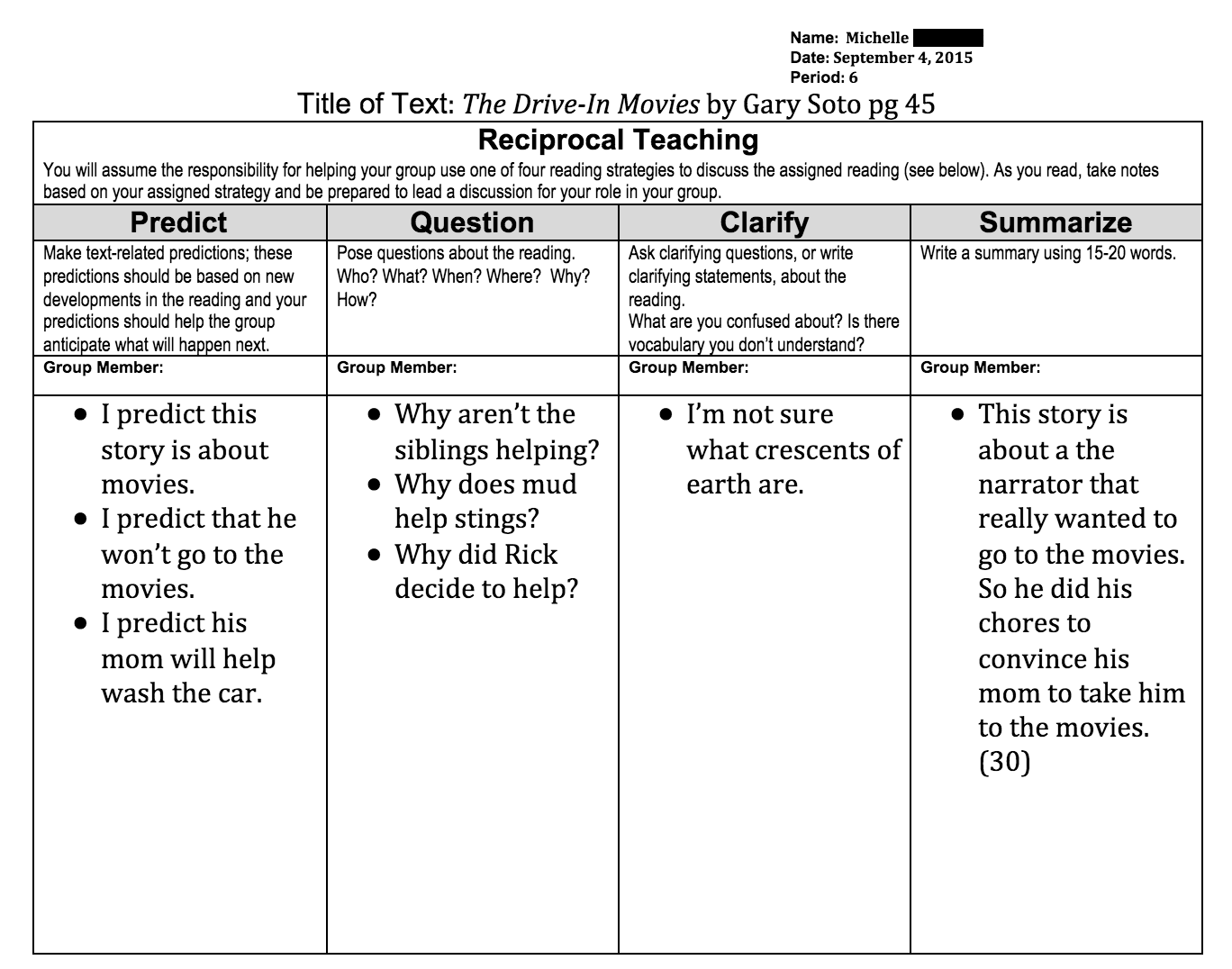First, it was hard for me to believe summer was over. Now, I’m trying to figure out how the first two weeks of school zoomed on by! We kept busy over the past ten days; I had an aide comment, “Wow! You’ve got these kids working hard in here!” WOOHOO! Yeah!
Let’s take a look at what we’ve been working on, shall we?
Writing Survey and Rhetorical Awareness
I spent the summer reading Teaching Writing that Matters: Tools and Projects That Motivate Adolescent Writers. Gallagher and Lee stress the importance of students being rhetorically aware; in other words, students need to know their audience, their purpose, and context for writing. I can remember being asked several times to write about myself during the first days of school. By the time you reach middle school, About Me essays can be a bit boring to write. Gallagher and Lee suggest having students complete a writing survey followed by a Three of Me activity. The Three of Me activity requires students to write three different descriptions of themselves. I thought this would be a great way for me to informally assess students’ writing, and it allowed them to write about themselves in different ways.
Here’s a sample of the writing survey students completed. I really enjoyed reading through these because I got to see some of the rules of writing students have heard throughout elementary school, and I got to see who LOVES to write and who HATES to write.
For the Three of Me assignment, students had to introduce themselves to the class, describe themselves as if they were in an advertisement, and write a campaign speech explaining their qualifications.
Part 1:
Part 2 (students used Google Draw for their “advertisements”):
Part 3 Students explained their qualifications for a public office.:
At the beginning, this concept was a bit difficult for students comprehend. We had to review the words qualifications and public office. We watched a few middle school campaign speeches on Youtube, looked at campaign posters, and watched President Obama give speeches to various audiences. Those videos and images seemed to help a lot!
Reciprocal Teaching/Fab Four Reading Strategies
I also introduced students to Cornell Notes. This was a very scaffolded version of Cornell Notes. My aim is to continuously model how to take notes during the first trimester and continue to loosen the strings as the year progresses. For this lesson, students filled in the yellow blanks with words from my PowerPoint. This lesson was about the Fab Four reading strategies: predict, question, clarify, and summarize. We watched this video and a video I made last year (you’ve gotta watch this! The students love this video!).
On Friday, students came to class and read over their Cornell Notes and discussed any questions they had about Thursday’s lesson with their partner. Then they quizzed each other using the Cornell Notes. After that, they took a short check for understanding quiz I created using Google Forms. 100% accuracy from all classes. Yes!!
After the quiz, we read Gary Soto’s The Drive-In Movies and used the Fab Four Strategies while reading. Before reading, students rated their knowledge of key vocabulary found in the story. We didn’t finish this, so we will revisit the vocabulary on Tuesday. Watch the video I created for this lesson here.
I know it well: I can define this word, I know the part of speech for this word, I can use it in multiple sentences, and I use it in my vocabulary.
I have seen or heard it: I can’t really define this word, but I have seen or heard it before.
I have no clue: I know nothing about this word!
We didn’t break into Fab Four groups; instead we read the story as a class (listen to me read it here), and I paused at certain points in the story to show them how to predict, question, and clarify. After we read the story, students tried their best to write a summary using 15-20 words. Students used the reciprocal reading tracker below for all of their questions, etc.
Here’s to week three!









